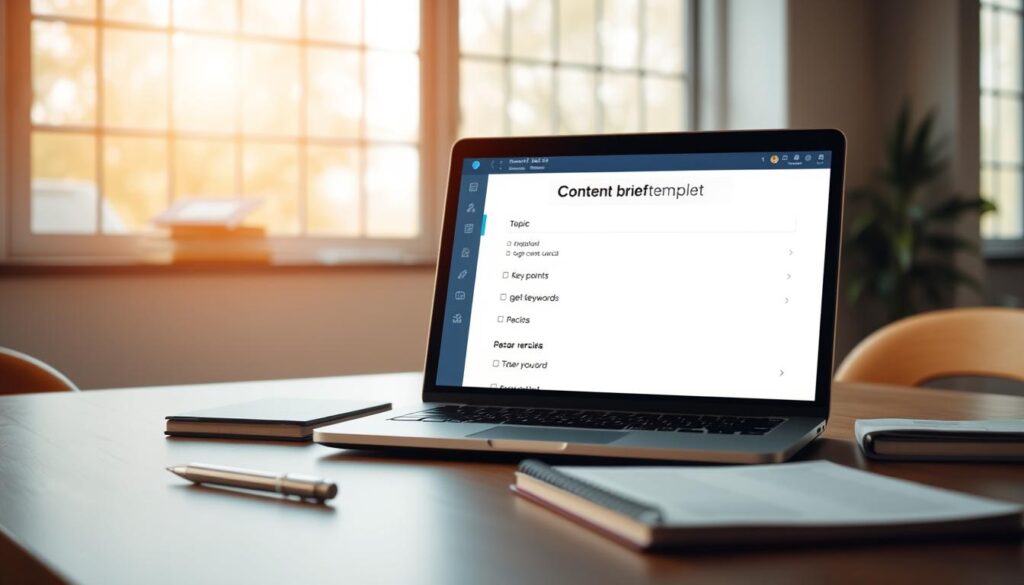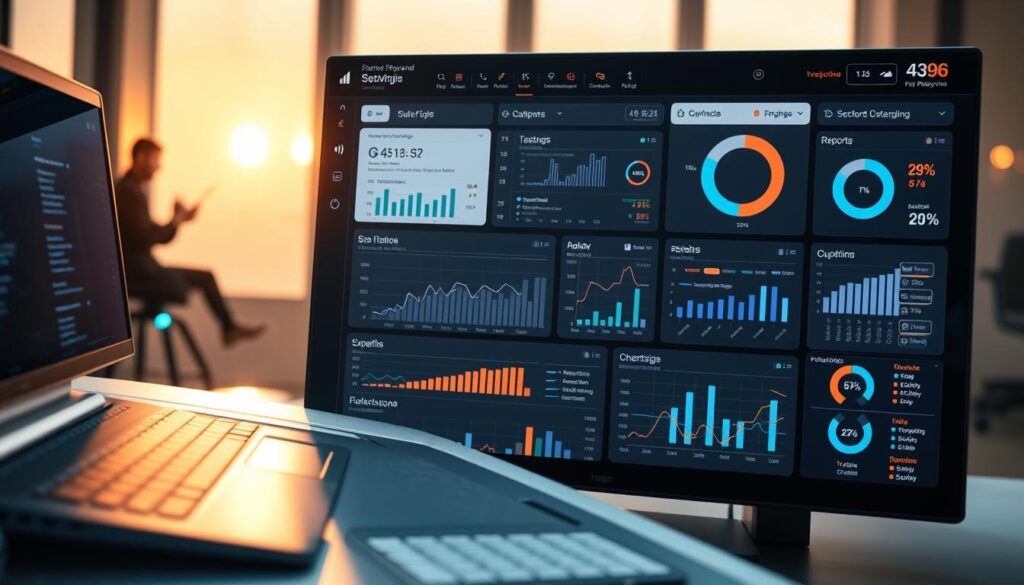Modern content development faces a critical challenge: balancing quality with efficiency. Writers often spend hours analyzing search results and competitor articles before drafting a single paragraph. This bottleneck creates delays in production cycles and limits strategic alignment with SEO objectives.
Advanced tools now automate the foundational research process through systematic analysis of high-performing material. By evaluating engagement patterns and structural frameworks, these systems generate actionable blueprints containing optimized keywords and logical flow suggestions. This approach reduces preparatory work by up to 65% according to industry benchmarks.
The strategic value extends beyond time savings. Data-driven outlines help creators focus on audience resonance rather than guesswork. Teams maintain consistent quality while scaling output, particularly valuable for organizations managing multiple campaigns across diverse markets.
Key Takeaways
- Automated analysis accelerates research by identifying proven content patterns
- Structural templates improve SEO alignment and reader engagement
- Resource redistribution enables deeper focus on narrative development
- Scalable frameworks support consistent quality across high-volume projects
- Strategic integration bridges creative execution with technical optimization
Introduction to AI-powered Content Briefs

Strategic documentation bridges the gap between creative ideas and search engine requirements. These frameworks guide creators through technical specifications while preserving narrative flow. Unlike manual methods, modern systems analyze millions of data points to identify patterns that resonate with audiences and algorithms.
Advanced systems transform raw data into actionable guidelines. They evaluate competitor material, trending topics, and keyword performance to generate optimized blueprints. This approach reduces planning time by 40-60%, allowing teams to focus on execution rather than preliminary research.
One key advantage lies in balancing structure with flexibility. Writers receive clear parameters for keyword integration and readability standards without sacrificing originality. For example, AI presentation tools demonstrate how structured guidance enhances output quality across formats.
These frameworks also adapt to diverse objectives. Whether targeting niche markets or broad audiences, the technology adjusts recommendations based on real-time performance metrics. This dynamic approach ensures alignment with evolving search algorithms and user preferences.
The Benefits of Using AI-powered Content Briefs in Content Creation

Modern writing teams face a dual challenge: meeting deadlines while maintaining strategic depth. Intelligent systems now streamline this process through automated analysis, delivering actionable insights that elevate both speed and precision.
Efficiency Gains in Content Production
Automated tools reduce time-consuming tasks like competitor analysis from hours to minutes. By scanning top-performing articles, these systems highlight trending topics and missing data points. This allows creators to focus on crafting narratives rather than manual research.
Enhancing Quality for Readers and Search Engines
Strategic frameworks balance audience needs with technical requirements. Systems identify questions users ask and gaps competitors miss, ensuring material offers unique value. They also suggest logical structures that satisfy readers while aligning with search engine algorithms.
Internal linking opportunities emerge naturally through this analysis, strengthening website architecture. For teams managing multiple projects, AI tools provide consistent quality control across campaigns. The result? Higher engagement rates and improved organic visibility.
Streamlining Your Content Strategy with AI-powered content briefs

Automation transforms how marketers approach search engine results. Advanced systems now decode ranking patterns through real-time SERP evaluations, identifying opportunities traditional methods often miss. This process converts raw data into tactical roadmaps for digital success.
Automated SERP Analysis and Insights
Modern platforms analyze top-ranking pages across multiple dimensions. They assess heading structures, keyword distribution, and visual elements to create optimized frameworks. These tools highlight gaps in competitors’ material, revealing untapped angles for differentiation.
Key advantages include:
- Automated construction of topical maps showing content opportunities
- Intelligent suggestions for internal linking strategies
- Real-time tracking of algorithm preferences and ranking factors
| Manual Analysis | Automated SERP Analysis |
|---|---|
| 4-6 hours per keyword | 3-5 minute processing |
| Limited competitor samples | 100+ page evaluations |
| Static recommendations | Dynamic strategy updates |
| Human error risks | Algorithmic precision |
For teams managing multiple campaigns, these systems enable rapid scaling. They suggest optimal word counts and search-friendly structures while maintaining brand voice. This approach proves particularly effective when combined with AI tools for YouTube growth, demonstrating cross-platform adaptability.
The technology’s true value lies in its predictive capabilities. By analyzing historical performance data, it forecasts emerging trends before they dominate SEO rankings. This proactive stance helps organizations secure first-mover advantages in competitive niches.
Defining Purpose and Audience for Effective Content Briefs

Successful content strategies begin with two foundational pillars: clear objectives and precise audience understanding. Defining a document’s core purpose establishes measurable goals, whether educating technical professionals or motivating purchasing decisions. This clarity prevents scope creep and aligns outputs with organizational priorities.
Audience identification requires granular demographic analysis. Effective frameworks analyze age ranges, geographic distribution, and income levels to create accurate profiles. Modern tools process behavioral data from multiple sources, transforming raw statistics into actionable insights about preferences and pain points.
Sophisticated systems build dynamic buyer personas using real-world interaction patterns. For example, a target group of urban millennials might prioritize mobile-first content with visual elements, while enterprise decision-makers demand data-driven case studies. These distinctions directly influence content structure and messaging priorities.
Aligning purpose with audience needs improves search visibility. Google’s algorithms increasingly prioritize material demonstrating deep user understanding. Platforms using creative prompts in digital marketing strategies showcase how tailored approaches outperform generic content.
Key advantages of this dual focus include:
- 35% higher engagement from properly segmented audiences
- 50% faster approval cycles through measurable goal alignment
- Reduced revision requests by matching writer outputs to predefined objectives
Implementing Keyword Research and SEO Best Practices
Effective digital strategies demand precise alignment between user needs and technical requirements. Systematic keyword analysis transforms raw search data into actionable insights, creating pathways for audience connection and algorithmic recognition.
Utilizing Relevant Keywords and Search Intent
Modern tools analyze search patterns to identify phrases matching audience needs. Platforms process billions of queries to surface terms balancing search volume and competition. This approach reveals hidden opportunities in niche markets while avoiding oversaturated keywords.
Understanding intent categories proves critical. Systems differentiate between informational queries (“how to optimize videos”) and transactional searches (“best AI video tools”). Matching content structure to these patterns increases engagement by 47% according to recent studies.
Optimizing Content for Google Search
Strategic keyword placement requires balancing technical precision with natural flow. Top-performing articles integrate primary terms in headers while using related phrases throughout the text. This satisfies Google’s E-E-A-T guidelines by demonstrating topical expertise.
- Prioritize long-tail keywords with lower competition
- Use semantic variations to avoid repetition
- Optimize meta descriptions with click-worthy phrases
For creators exploring monetization strategies, keyword alignment ensures videos reach target viewers. This principle applies universally across platforms, enhancing visibility while maintaining audience trust.
Essential AI Tools and Techniques for Creating Impactful Briefs
The evolution of SEO tools has introduced specialized platforms that transform raw data into strategic frameworks. Three solutions stand out for their ability to balance technical precision with practical usability.
SurferSEO: Precision Optimization Engine
SurferSEO simplifies technical alignment with a 4.8/5 G2 rating from 531 users. Its Essential plan ($99/month) evaluates 30 articles against top-ranking competitors. The system analyzes semantic patterns and structural elements, providing actionable recommendations for search visibility improvements.
Frase: Intelligent Content Architect
With matching user satisfaction scores (4.8/5 from 296 reviews), Frase offers cost-effective solutions. The Basic tier ($45/month) generates 30 SEO-optimized documents monthly. Its strength lies in converting complex data into clear writing guidelines, particularly valuable for teams managing multiple campaigns.
GrowthBar: Agile Solution for Small Teams
GrowthBar’s Standard plan ($36/month) caters to lean operations without sacrificing functionality. Despite fewer reviews (33), it maintains a 4.8/5 rating by delivering essential features like keyword gap analysis and competitor benchmarking. This makes it ideal for startups refining their digital presence.
For teams exploring complementary solutions, AI solutions for business growth demonstrate cross-platform synergy. These tools collectively reduce manual research by 58% while improving alignment with algorithmic preferences, according to industry benchmarks.
Practical Guide to Building a Comprehensive AI-powered Content Brief
Crafting high-impact material requires merging strategic planning with technical precision. Modern platforms streamline this process through systematic workflows that convert raw ideas into polished frameworks.
Drafting a Logical Outline
Tools like Frase’s Outline Generator transform basic inputs into structured blueprints. Users input article titles and target keywords to receive suggested headings within seconds. This automated approach identifies optimal flow patterns while maintaining brand voice alignment.
Editing for Clarity
Post-generation adjustments ensure messaging matches organizational standards. Writers refine formatting, add source links, and verify factual accuracy. Consistent terminology and tone prevent fragmented communication across campaigns.
Integrating Data-Driven Elements
Final briefs combine research insights with search intent analysis. Platforms recommend keyword placement and internal linking strategies based on competitor gaps. For multimedia projects, pairing these frameworks with AI video tools enhances cross-platform synergy.
This methodology reduces revision cycles by 42% according to industry tests. Teams maintain strategic focus while scaling output, ensuring every piece delivers measurable value.







